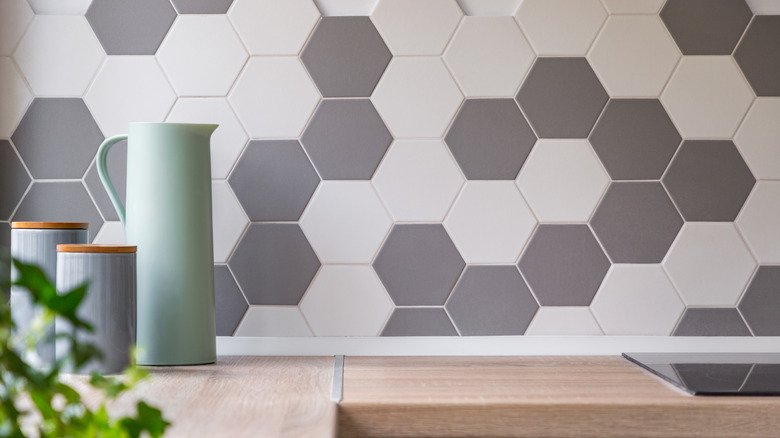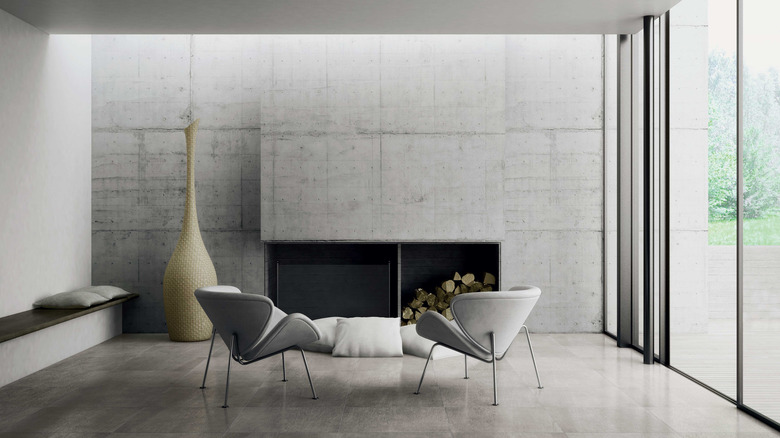The Big Differences You Should Know Between Porcelain And Ceramic Tiles
Tile remains a perennial favorite for homeowners looking for a durable, low-maintenance, and affordable option for flooring and wall accents. And with trendy new choices — including wood-look, marble-look, large-format, and non-slip tile, per Realtor.com — the material is just as popular as ever.
But if you're in the market for some new tile, you may want additional information about the product beyond its shape, color, size, and price. You may be wondering: What exactly is tile made of, anyhow? The majority of tiles fall under the category of ceramics, which are tiles made from natural clays that are hardened and made rigid by heat, per The Spruce.
However, complicating matters is the fact that the category of ceramics includes two types: ceramic and porcelain. Although some people use these terms interchangeably when talking about tile types, they have very distinct differences. Keep reading to discover the big differences you should know between porcelain and ceramic tile.
Both ceramic and porcelain tile have their pros and cons
How much water a tile can absorb is what technically distinguishes between porcelain and ceramic tile, per The Spruce. Ceramic can absorb more than porcelain, which makes it less durable.
Of the two choices, porcelain tile — which is made of special kaolin clay that's purer and finer than that found in ceramic clay — is generally more expensive, costing about $3 to $35 per square foot versus $.50 to $35 for ceramic. Not surprisingly, porcelain has several advantages in its favor. First, whereas most ceramic tile is a solid color, porcelain can take on various patterns, like the wood- and marble-look tiles mentioned above. On top of that, most porcelain tile has a glazing treatment applied to the surface, which extends its lifespan. Its superior water resistance also makes it a good choice for outdoor use in mild climates, whereas ceramic tile would not fare well outside anywhere.
However, ceramic tile has its advantages, too. Because it's made of coarser clay and less fine kaolin clay, it's softer and thus easier to cut and install. It's also cheaper. On the other hand, since porcelain is harder, it's stronger, more durable, and less likely to show chips.
When it comes to cleaning and upkeep, both porcelain and ceramic tile have the same needs. And, in terms of lifespan, both materials can last a lifetime if they are appropriately maintained.

